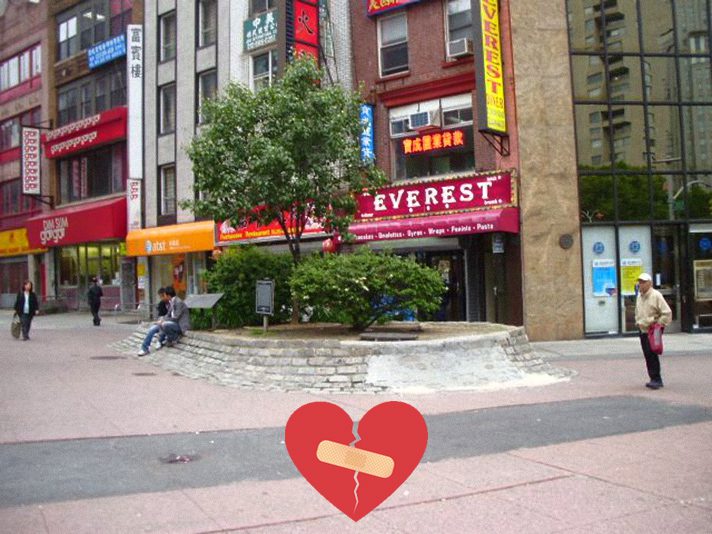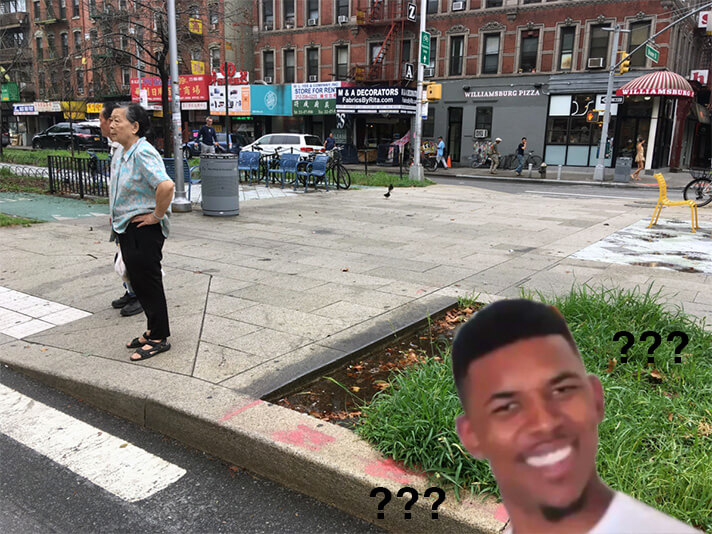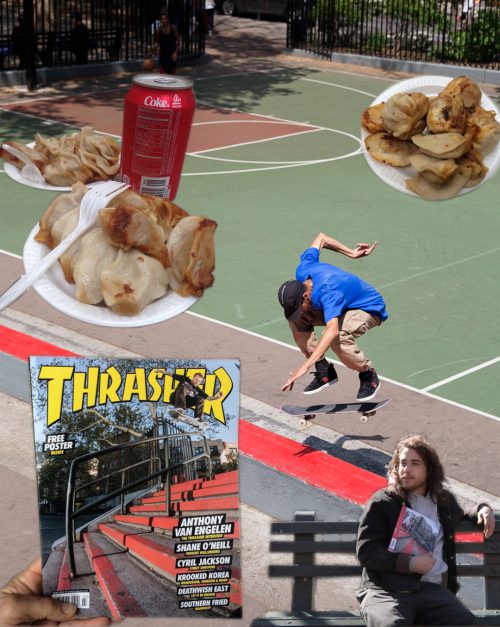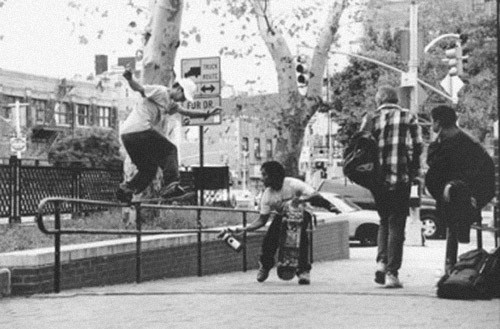
The China Banks are some of skateboarding’s most hallowed ground. From being a pivotal filming location for Powell Peralta’s The Search For Animal Chin, to the site of Joe Valdez’s tricks that earned him a devoted cult twenty years after the fact, to the host of numerous NBDs, magazine covers, and even 2018 video part enders — there are few street spots in skateboarding that have been able to endure FOUR DECADES of continued innovation and history.
…but those are San Francisco’s China Banks.
New York‘s China Banks are perfect three-foot-high quarterpipe transitions, which are ideal for a city that didn’t begin getting a surge in actual skatepark transitions until the 2010s. They have gaps between them, a hip, and are the perfect size for anyone looking to have fun learning a transition trick on a natural quarterpipe. The only catch is, of course, that they are made out of perhaps the only surface less conducive to skateboarding than fire or water: cobblestones.
So why have our Chinatown Banks, constructed out of some of the worst possible material for skateboarding, endured as a kinda-sorta-maybe-could-be spot for the past ~twenty years?
You know those friends who always find themselves in “project” relationships, where they try to see the best in the person despite countless red flags, and drain themselves trying to “fix” their significant other? That’s New York skateboarding’s relationship with the China Banks — I mean, have you seen the garbage we skate? We look at bad spots through rose colored glasses, thinking they’re mere steps away from perfection. We’re co-dependent on these bad spots; the plain trick on the bad spot just means so much more than if it’s a hard trick on a recycled plastic bench in a parking lot. Maybe if we approach them just the right way, and apply just the right tweaks to them, the Chinatown Banks will love us back.
Unfortunate for us, things don’t always work out as optimistically as we hope.
More »









